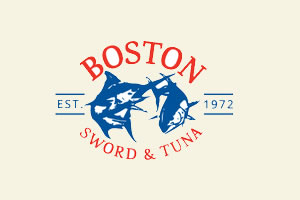
Finfish
Sturgeon, White
Sturgeon is prehistoric. It is covered in rows of sharp, bony shields or plates called “buttons,” instead of scales. They are cartilaginous with no internal skeleton. Once abundant in the United States and exported to Europe, their numbers collapsed by the end of the 19th century, and today wild Sturgeon are almost impossible to obtain. White and Green Sturgeon are now harvested on a limited scale on the West Coast and most Sturgeon is farm-raised in California. The market size is 18 to 22 pounds, and they are sold in bullets (H&G, tail, fins removed). Farmed White Sturgeon has a milder and more delicate flavor than Green Sturgeon. The flesh is similar in texture to chicken breast, lean and firm. Raw meat is a pale pink and cooks up white. Sturgeon is farmed in ponds and closed system tanks that release minimal effluent into surrounding waterways. Farmed White Sturgeon is generally smaller than its wild cousins and can take 10 to 12 years to reach market size.
















